Our Verdict
Dragon Age: The Veilguard is an exceptional-looking game with initially exciting combat, but it’s let down by uneven storytelling that makes it duller than it should be.
It’s another day of perpetual sunshine on the palm tree-shaded, white sand beaches of the Rivain Coast. On this excursion, Dragon Age: The Veilguard‘s protagonist, Rook, fights a giant dragon. Last time, the hero and their friends battled a group of armor-plated warriors. Later, they’ll return once again to investigate one of the crumbling stone fortresses baking beneath the Coast’s clear blue skies. Throughout all of this, the same bright light bathes the region, the sun never moving in the sky. Nothing much changes on the Rivain Coast but the type of enemies to defeat and the twisting tropical pathways worth exploring. There’s consistent beauty to the area and a hollowness beneath it that gives the impression of a land in stasis.
A good story can make even the most repetitive videogame activities enjoyable. Shooting or pummelling waves of enemies can remain compelling for hours if the action has enough context, with some sense of motivation going a long way in staving off monotony. Dragon Age: The Veilguard, throughout its fifty-odd-hour runtime, demonstrates this by being both enthralling and grindingly dull by turns, largely because of its narrative structure.

Ten in-universe (and real-world) years on from the events of 2014’s Dragon Age: Inquisition, The Veilguard kicks off promisingly enough. You can customize Rook by choosing their appearance, skills, personal background, and allegiance to a guild of treasure hunters, a society of necromancers, an urban resistance group, or other factions. From there, Rook is thrust directly into an unfolding assassination plot. Bald, pointy-eared elf Solas, a member of the player’s party in Inquisition, is attempting to cast the world into disarray through a magical ritual. The Veilguard starts with Rook and his new companions trying to stop him. Their plan, of course, goes awry, in spectacular fashion. When the dust settles, the RPG‘s main plot sees Rook and their humbled cohort needing to traipse around the fantasy world of Thedas, winning allies to their cause, cleaning up the mess that resulted from their failure, and preparing another assault against increasingly powerful enemy forces.
In practice, this means a lot of hopping from one sprawling location on the map to another, chatting with characters, and battering countless enemies. Fortunately, The Veilguard’s combat is a joy for the first half of the game or so. As you level up, plunking skill points into new abilities and deciding what kind of fighter you want your Rook to be, there’s plenty of variety to each encounter. Though it’s a role-playing game, with equipment stats and menu-based abilities to upgrade and use, The Veilguard’s fighting is dynamic instead of deeply strategic and, often, a test more of reflex than careful consideration. Rook can dodge attacks, parry blows, and charge light or heavy thrusts of their weapon. Player and companion character abilities are assigned hotkeys, brought up in the midst of a fight to be deployed as quickly as they’re ready or selected through a paused screen that highlights abilities during battle.
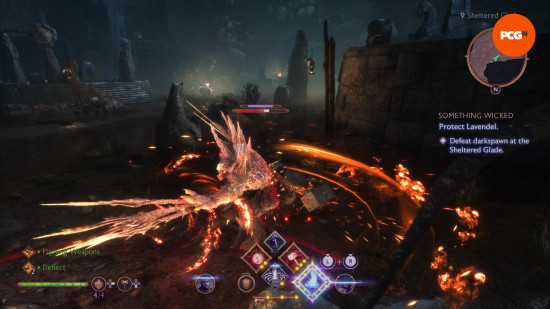
At its best, this approach rewards complementary defensive and offensive combinations based on the three-character party composition, thinking quickly to heal Rook or set up devastating joint attacks. As the game goes on, though, and you level up your party while settling into a groove of effective synergies, all but the toughest fights become an exercise in attrition. There are just too few enemy types to warrant changing up strategies very often, and, more importantly, simply too many battles to fight in every mission. For the last portion of The Veilguard, combat becomes a process of waiting until abilities have recharged so you can set them off in the appropriate order and whale away at enemy health bars with basic attacks until the field is clear.
As mentioned above, these repetitive fights could be forgiven more easily in an exciting narrative context. After its exhilarating prologue, though, The Veilguard falls into a pattern of meandering storytelling. Rook’s ultimate goal involves bringing together a party — all, conveniently enough, belonging to one of several factions centered in each of the game’s main ‘hub’ areas — and preparing for several large-scale assaults against their enemies by, simply put, completing the chores necessary to make their new teammates happy and effective fighters. Veilguard’s quests typically involve traveling to a location from the map screen to investigate relatively minor mysteries or lend a companion help in solving a deeply personal problem. They mostly follow the same format: Investigate a local villain by running from one waypoint to another, fight groups of goons and eventually take on a larger boss, pick up your newfound loot, and then talk to the characters involved in the mission to hear how they feel about, say, thwarting a nefarious force that’s out to mess up their faction’s benevolent purpose.
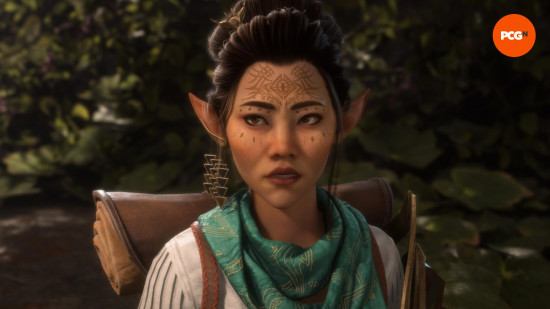
Because the big, plot-pushing missions are so few and far between, with developments in the main story stalled by hours of smaller-scale tales, investing in The Veilguard’s narrative requires an investment in its cast of companion characters. While they’re well drawn at times, they more often resemble a septet of ambulatory open wounds, constantly waiting for the slightest pressure to begin bleeding from the heart about their deepest traumas, their secrets and desires. They’re less a group of people than a collection of anthropomorphized story themes. There’s Harding, a dwarf plagued by the nature of her newfound magic powers; Davrin, a stalwart knight, who wants to protect a species of nearly extinct griffons beloved by his order; Taash, a hulking warrior from the horned Qunari people, who must reconcile their mother’s culture with that of the land of their birth. Aside from their defining issues, these characters can be summarized by a single trait. Harding is warm-hearted. Davrin is stern. Taash is, forgive the rhyme, brash. None of them are contradictory or lingeringly unassured and, as a result, they function more as avatars for story ideas than believably complex people.
The best of them, the Vincent Price-lookalike necromancer Emmrich and his skeleton helper Manfred, star in a storyline that elides easy answers to difficult questions, exploring questions of mortality in a magical world through the naturally relevant environment of a sprawling necropolis, filled with glowing ghosts and their attendant tombs. Still, despite the greater strengths of this writing, it falls flat with time. Prompt him, or any other character, and they begin talking at length about their personal bugbears in a manner that reads not just as weirdly solipsistic, but too artificial to be believable. The conclusion to several of the companion’s individual storylines, too, are pat, summarized at the end of mission cutscenes that package away difficult issues into neat solutions. Combined with the sluggish plot, the result is a story that feels like a freeze-framed play, with all of the actors confined to strict roles, only coming to life when the player pokes at them or a certain algorithmic condition is met in the game’s code.
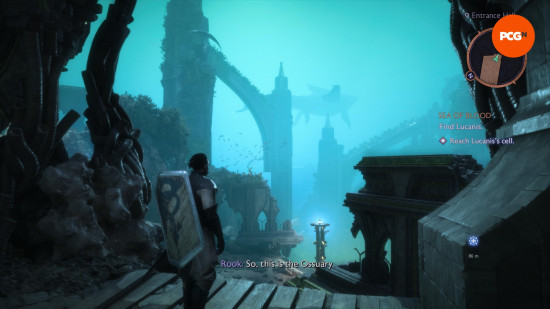
Yet despite these significant issues, it’s hard to dismiss The Veilguard entirely. When its story jerks forward in fits of dramatic momentum — as it does at the end of its first big act or in a rollicking, pyrotechnic concluding sequence — its faults fade away. It helps that it’s a great-looking game, its levels backgrounded with technicolor vistas that come across as lavish sets. There are the misty, skull-decorated catacombs of a sprawling necropolis; the red- and orange-leafed forests surrounding a massive castle; underwater fortresses; and stone cities with towering statues filling the skyline. These locations are populated by characters with slightly cartoonish anatomy, dressed in outfits whose style moves beyond the familiar realm of pseudo-Medieval and Early Modern European fantasy and into less expected visual territories — tricorn caps; intricately patterned capes; leather and metal armor made from jagged geometric shapes. There’s so much visual invention that, even in its dullest moments, it remains enjoyable just to look at what’s on display.
If the entirety of the game lived up to its best qualities and moments, it would be easy to recommend. As it is, The Veilguard is too unevenly plotted and its combat design too poorly executed for it to consistently offer the enthralling experience it occasionally becomes. Like the gorgeous Rivain Coast, whose beauty is betrayed by a sense of emptiness, there’s a lot to admire in Bioware’s latest, but too much monotony for it to make a truly strong impression.
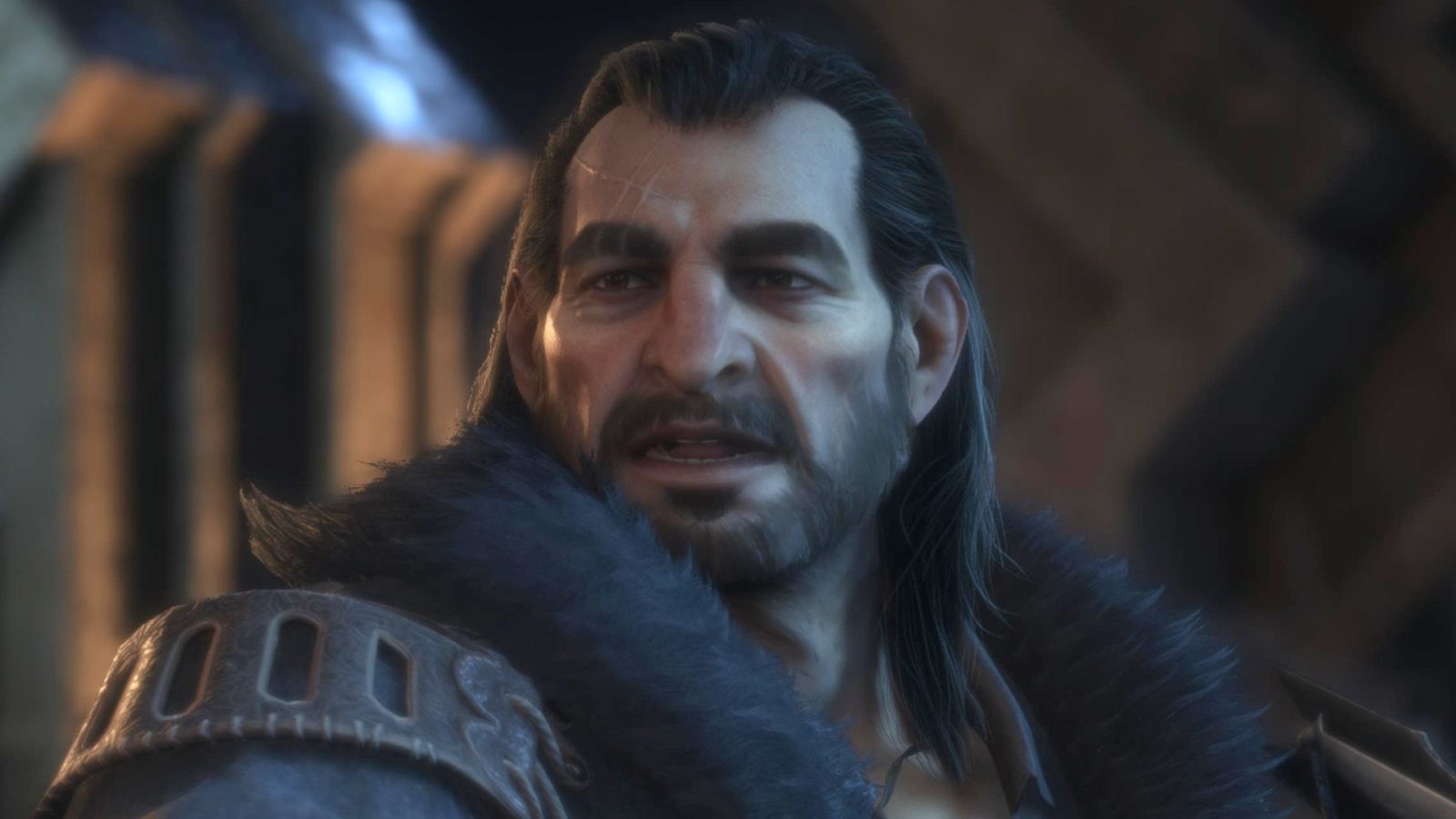

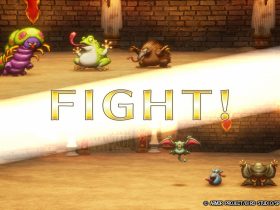
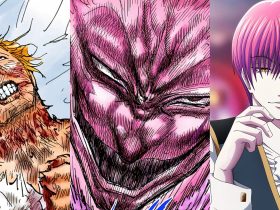


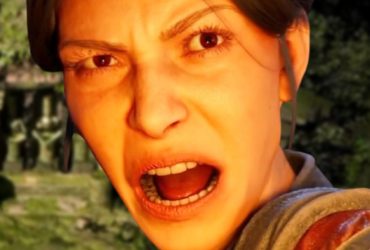
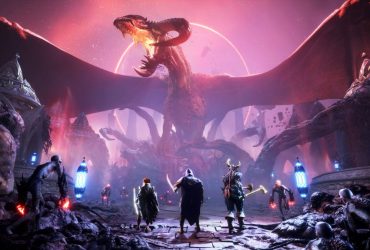
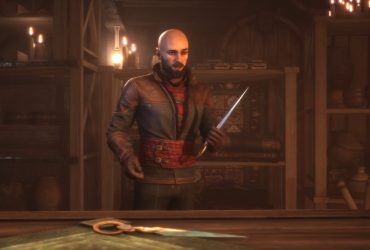

Leave a Reply